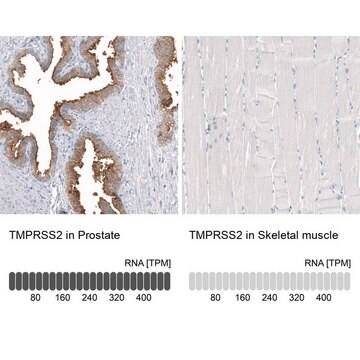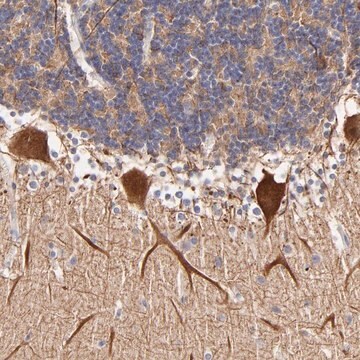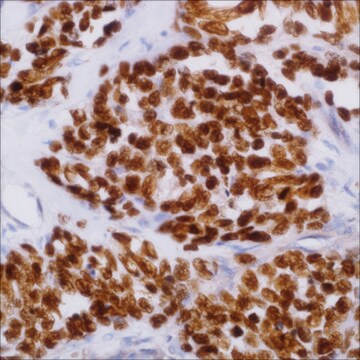HPA011906
Anti-CD151 antibody produced in rabbit
Prestige Antibodies® Powered by Atlas Antibodies, affinity isolated antibody, buffered aqueous glycerol solution
别名:
Anti-CD151 antigen, Anti-GP27, Anti-Membrane glycoprotein SFA-1, Anti-PETA-3, Anti-Platelet-endothelial tetraspan antigen 3, Anti-Tetraspanin-24, Anti-Tspan-24
登录查看公司和协议定价
所有图片(2)
About This Item
推荐产品
生物源
rabbit
品質等級
共軛
unconjugated
抗體表格
affinity isolated antibody
抗體產品種類
primary antibodies
無性繁殖
polyclonal
產品線
Prestige Antibodies® Powered by Atlas Antibodies
形狀
buffered aqueous glycerol solution
物種活性
human
技術
immunohistochemistry: 1:50- 1:200
免疫原序列
LNTELKENLKDTMTKRYHQPGHEAVTSAVDQLQQEFHCCGSNNSQDWRDSEWIRSQEAGGRVVPDSCCKTVVALCGQRDHASNIYKVEGGCITKLETF
UniProt登錄號
運輸包裝
wet ice
儲存溫度
−20°C
目標翻譯後修改
unmodified
基因資訊
human ... CD151(977)
免疫原
CD151 antigen recombinant protein epitope signature tag (PrEST)
應用
All Prestige Antibodies Powered by Atlas Antibodies are developed and validated by the Human Protein Atlas (HPA) project and as a result, are supported by the most extensive characterization in the industry.
The Human Protein Atlas project can be subdivided into three efforts: Human Tissue Atlas, Cancer Atlas, and Human Cell Atlas. The antibodies that have been generated in support of the Tissue and Cancer Atlas projects have been tested by immunohistochemistry against hundreds of normal and disease tissues and through the recent efforts of the Human Cell Atlas project, many have been characterized by immunofluorescence to map the human proteome not only at the tissue level but now at the subcellular level. These images and the collection of this vast data set can be viewed on the Human Protein Atlas (HPA) site by clicking on the Image Gallery link. We also provide Prestige Antibodies® protocols and other useful information.
The Human Protein Atlas project can be subdivided into three efforts: Human Tissue Atlas, Cancer Atlas, and Human Cell Atlas. The antibodies that have been generated in support of the Tissue and Cancer Atlas projects have been tested by immunohistochemistry against hundreds of normal and disease tissues and through the recent efforts of the Human Cell Atlas project, many have been characterized by immunofluorescence to map the human proteome not only at the tissue level but now at the subcellular level. These images and the collection of this vast data set can be viewed on the Human Protein Atlas (HPA) site by clicking on the Image Gallery link. We also provide Prestige Antibodies® protocols and other useful information.
生化/生理作用
CD151 is a transmembrane protein belonging to the tetraspanin family. It is involved in the regulation of cell-substrate adhesion, cell migration, tumor progression, cell metastasis, and angiogenesis. It possesses high binding affinity for the laminin-binding integrins (α3β1, α6β1 and α6β4) and other tetraspanins including growth factors (HGFR, EGFR and TGF-β1R) and matrix metalloproteinases (MMP-7, MMP-2 and MMP-9). It also controls the post-adhesion activities including cell spreading, migration, formation of metastasis, and invasion. In neoplastic and endothelial cells, it participates in tumor neovascularization. Positive expression of CD151 is associated with several types of cancers and research shows the potentiality of the gene as a prognostic biomarker of gallbladder cancer (GBC), gastric cancers.
特點和優勢
Prestige Antibodies® are highly characterized and extensively validated antibodies with the added benefit of all available characterization data for each target being accessible via the Human Protein Atlas portal linked just below the product name at the top of this page. The uniqueness and low cross-reactivity of the Prestige Antibodies® to other proteins are due to a thorough selection of antigen regions, affinity purification, and stringent selection. Prestige antigen controls are available for every corresponding Prestige Antibody and can be found in the linkage section.
Every Prestige Antibody is tested in the following ways:
Every Prestige Antibody is tested in the following ways:
- IHC tissue array of 44 normal human tissues and 20 of the most common cancer type tissues.
- Protein array of 364 human recombinant protein fragments.
聯結
Corresponding Antigen APREST72489
外觀
Solution in phosphate-buffered saline, pH 7.2, containing 40% glycerol and 0.02% sodium azide
法律資訊
Prestige Antibodies is a registered trademark of Merck KGaA, Darmstadt, Germany
免責聲明
Unless otherwise stated in our catalog or other company documentation accompanying the product(s), our products are intended for research use only and are not to be used for any other purpose, which includes but is not limited to, unauthorized commercial uses, in vitro diagnostic uses, ex vivo or in vivo therapeutic uses or any type of consumption or application to humans or animals.
未找到合适的产品?
试试我们的产品选型工具.
儲存類別代碼
10 - Combustible liquids
水污染物質分類(WGK)
WGK 1
閃點(°F)
Not applicable
閃點(°C)
Not applicable
個人防護裝備
Eyeshields, Gloves, multi-purpose combination respirator cartridge (US)
Rafal Sadej et al.
Laboratory investigation; a journal of technical methods and pathology, 94(1), 41-51 (2013-11-20)
Originally identified as a molecular organizer of interacting proteins into tetraspanin-enriched microdomains, the tetraspanin CD151 has now been shown to be involved in tumour progression. Increasing evidence emerging from in vitro, in vivo and clinical analyses implicates this tetraspanin in
Sang Yun Ha et al.
Annals of surgical oncology, 21(4), 1099-1106 (2013-12-07)
CD151, a transmembrane protein of the tetraspanin family, is implicated in the regulation of cell-substrate adhesion and cell migration. Overexpression of CD151 has been reported in several cancers and controls MET-dependent neoplastic growth by enhancing receptor signaling. However, association of
Hassan Vahidnezhad et al.
Matrix biology : journal of the International Society for Matrix Biology, 66, 22-33 (2017-11-16)
Epidermolysis bullosa (EB) is caused by mutations in as many as 19 distinct genes. We have developed a next-generation sequencing (NGS) panel targeting genes known to be mutated in skin fragility disorders, including tetraspanin CD151 expressed in keratinocytes at the
Troy C Lund et al.
Stem cells (Dayton, Ohio), 32(10), 2767-2779 (2014-06-07)
There is accumulating evidence that mesenchymal stem cells (MSCs) have their origin as perivascular cells (PVCs) in vivo, but precisely identifying them has been a challenge, as they have no single definitive marker and are rare. We have developed a
我们的科学家团队拥有各种研究领域经验,包括生命科学、材料科学、化学合成、色谱、分析及许多其他领域.
联系技术服务部门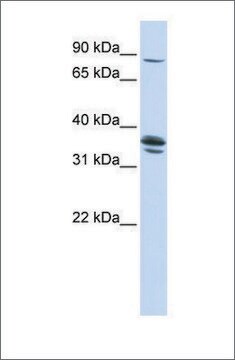
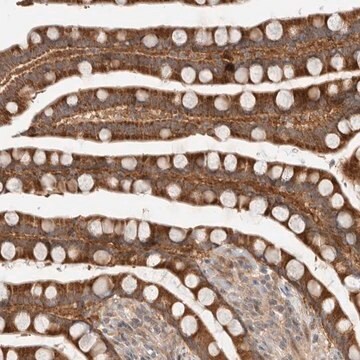
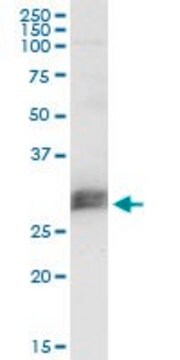
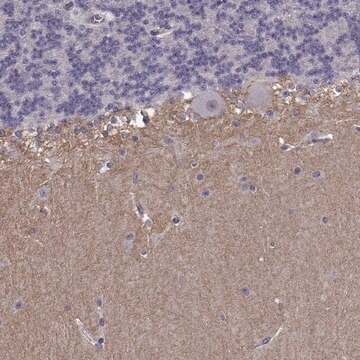
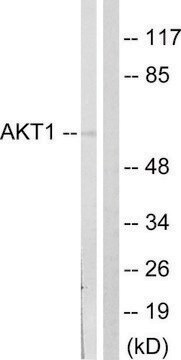
![Pentanoic acid, 5-[[2-(2,6-dioxo-3-piperidinyl)-2,3-dihydro-1,3-dioxo-1H-isoindol-4-yl]amino]- ≥95%](/deepweb/assets/sigmaaldrich/product/structures/104/897/602a4feb-4867-4443-9433-4aa300643b4f/640/602a4feb-4867-4443-9433-4aa300643b4f.png)
